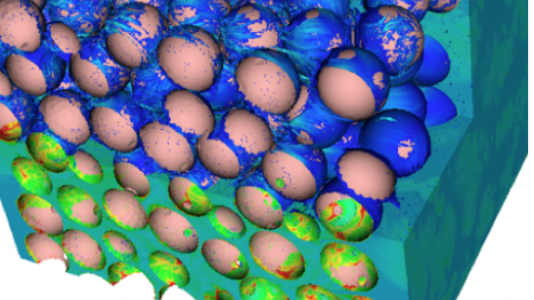
Argonne’s fluid-thermal simulation codes Nek5000 and NekRS have been designated to help the U.S. Department of Energy (DOE) and the Nuclear Regulatory Commission (NRC) in licensing processes for advanced nuclear technology.
Through the new initiative, a team of researchers in the Mathematics and Computer Science (MCS) division at Argonne National Laboratory will work with the DOE’s National Reactor Innovation Center to provide the NRC with state-of-the-art computing capabilities and modeling codes to support licensing of advanced nuclear reactors.
Nek5000 is a Gordon Bell and R&D 100 prize-winning code with high accuracy and demonstrated scaling to millions of processors. NekRS is a new version of Nek5000 that is targeting extreme-scale computers, including multicore and many-core platforms and graphics processing units. The two codes are developed as part of the High-Order Methods for High-Performance Multiphysics Simulations project supported by the DOE Applied Math Research base program.
“These updated codes will help expedite the licensing review process and can be used to predict expected reactor operations, including fuel and material performance,” said Paul Fischer, lead developer of Nek5000, a senior computer scientist in Argonne’s MCS division and a professor at the University of Illinois at Urbana-Champaign.
Both the Nek5000 and NekRS codes are based on spectral element discretizations that realize high accuracy with minimal data movement. They include advanced algorithms, scalable iterative solvers and high-order discretizations that enable scientists to efficiently simulate turbulence on the world’s leadership-class supercomputers.
“These capabilities will reduce the time it takes to validate and certify new reactor designs, enabling an efficient commercialization process,” said Misun Min, a computational scientist in Argonne’s MCS division and lead developer of NekRS.
Both Fischer and Min emphasized that the continued support of the DOE Applied Math base program as well as a collaboration with Nuclear Energy Advanced Modeling and Simulation program and the DOE Exascale Computing Project has been essential to the development of these capabilities.